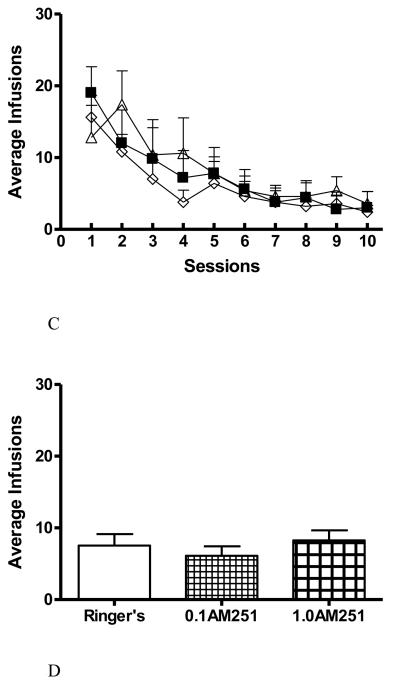Figure 2.
Line and bar graphs show results for lever pressing by session and treatments (A) and averaged across all sessions (B). A) Examining cumulative lever pressing by session demonstrates the temporal delay before AM251 at 1.0 μg/μL (triangles, n=6) had an effect on methamphetamine self-administration into the NAcc. The pound sign above sessions indicate significant difference from corresponding methamphetamine-vehicle sessions (circles, n=5); p-values are given in results. Note how the points for AM251 at 0.1 μg/μL (diamonds, n=6) are positioned between the methamphetamine (asterisks indicate significant differences from control) and Ringer's control group (squares, n=5); this low AM251 effect was not significantly different from any other group including the higher AM251 concentration. B) Bar graph of cumulative data across all sessions reveals robust suppression of lever presses for methamphetamine caused by the higher AM251 pretreatment. C & D) Line graph of each session and bar graph of cumulative lever presses across all sessions, respectively, for Ringer's control groups pretreated with 10 % DMSO (squares, n=5), AM251 0.1 μg/μL (open diamond, n=6) or AM251 1.0 μg/μL (open triangles, n=6) in (C) and Ringer's groups pretreated with DMSO, AM251 0.1 or 1.0 μg/μL in (D).


